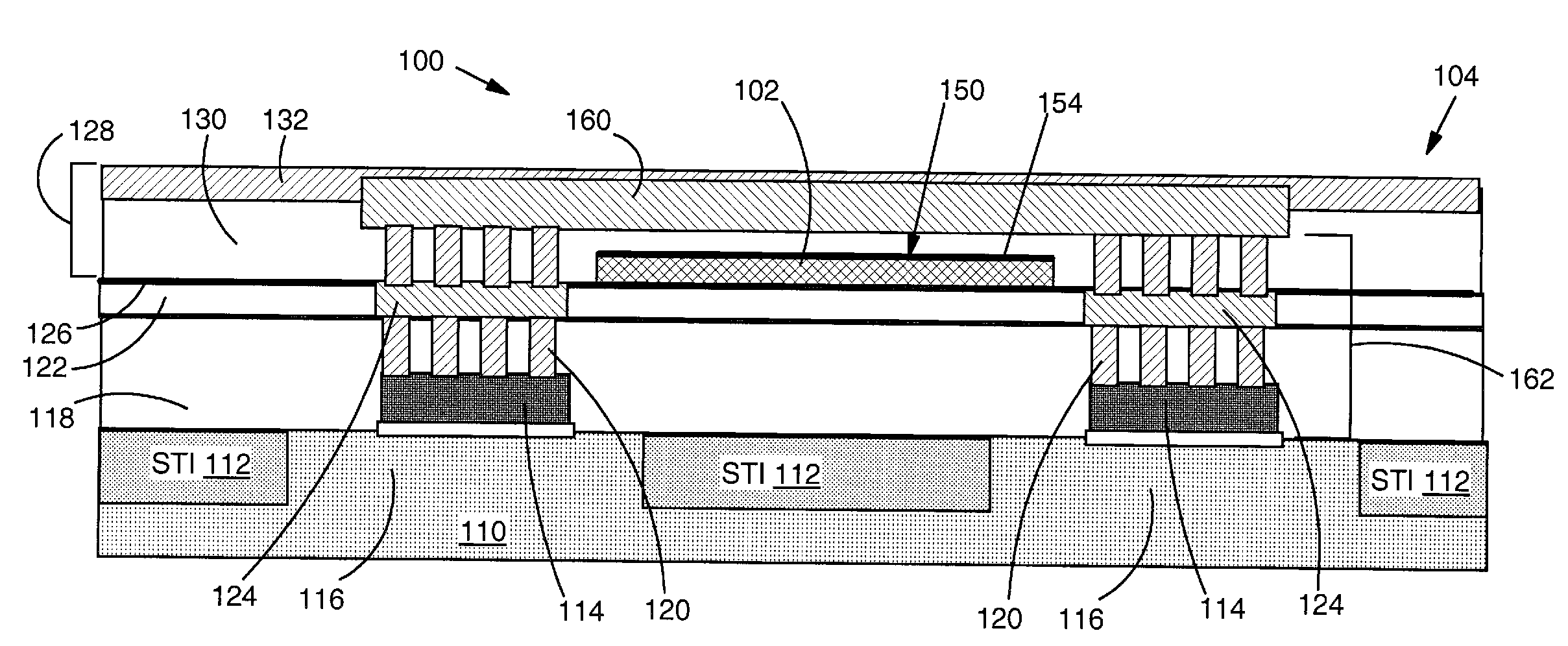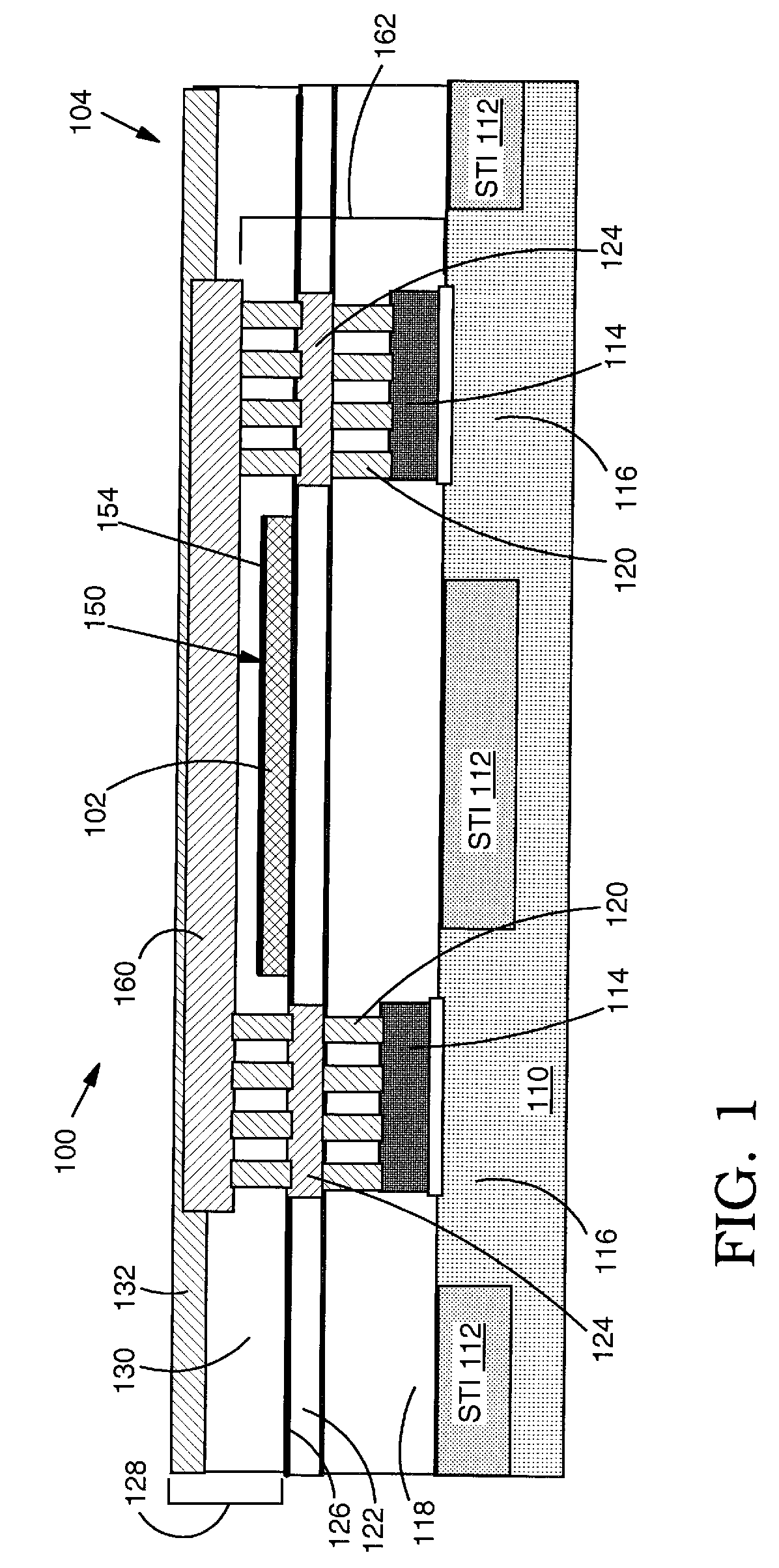Heat dissipation for heat generating element of semiconductor device and related method
a heat generating element and semiconductor technology, applied in semiconductor devices, semiconductor/solid-state device details, electrical devices, etc., can solve the problems of substantial heat generation in and near precision resistors, performance of precision resistors, and heat dissipation in semiconductor devices continues to be a challenge, so as to eliminate the loss of current carrying capability in wiring, the effect of reducing the amount of heat transfer
- Summary
- Abstract
- Description
- Claims
- Application Information
AI Technical Summary
Benefits of technology
Problems solved by technology
Method used
Image
Examples
Embodiment Construction
[0019] With reference to the accompanying drawings, FIG. 1 shows a cross-sectional view of a structure 100 for heat dissipation relative to a heat generating element 102 in a semiconductor device 104. FIGS. 2, 4 and 5 show a plan view of structure 100 relative to first, second and third embodiments of a heat generating element 102, 202, 302, respectively. The semiconductor device 104 may include a conventional structure such as a silicon substrate 110 including shallow trench isolations (STI) 112, e.g., of silicon dioxide (SiO2), a polysilicon gate structure 114 over silicon region 116, a dielectric cap 118 (e.g., tetraethyl orthosilicate (Si(OC2H5)4)(TEOS) or boro-phospho-silicate glass (BPSG)), contact vias 120, a first back-end-of-line dielectric 122, conducting lines 124, and a sealing dielectric cap layer 126. Back-end-of-line metal layers 128 (only one shown for clarity) may include, for example, a typical dielectric 130, conducting lines 132 or any other conventional structur...
PUM
 Login to View More
Login to View More Abstract
Description
Claims
Application Information
 Login to View More
Login to View More - R&D
- Intellectual Property
- Life Sciences
- Materials
- Tech Scout
- Unparalleled Data Quality
- Higher Quality Content
- 60% Fewer Hallucinations
Browse by: Latest US Patents, China's latest patents, Technical Efficacy Thesaurus, Application Domain, Technology Topic, Popular Technical Reports.
© 2025 PatSnap. All rights reserved.Legal|Privacy policy|Modern Slavery Act Transparency Statement|Sitemap|About US| Contact US: help@patsnap.com



